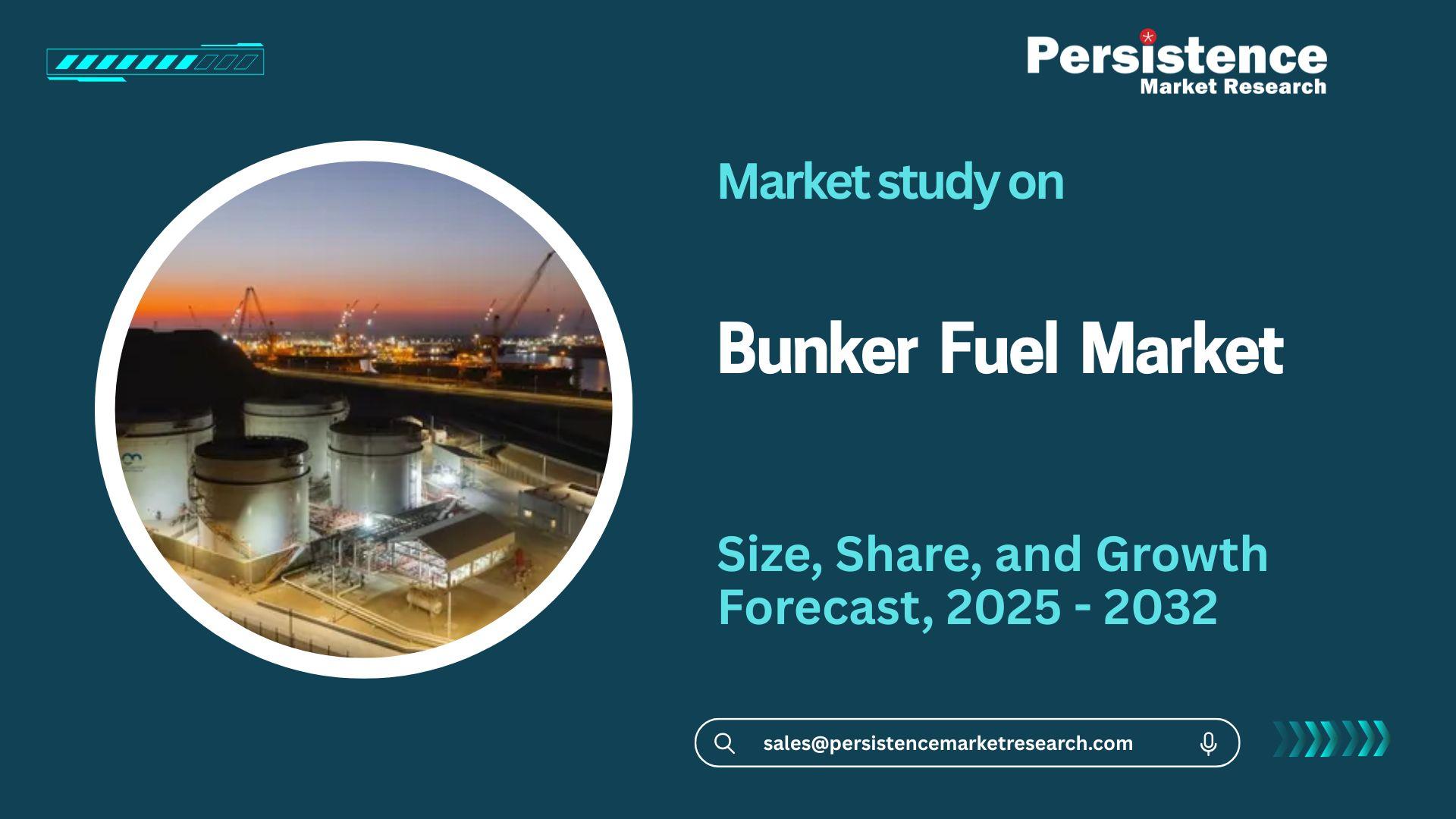The bunker fuel market plays a pivotal role in global maritime trade, serving as the primary energy source for ships worldwide. As of 2025, the global bunker fuel market is undergoing significant transformations driven by regulatory changes, technological advancements, and shifts in fuel preferences. This article delves into the current state of the bunker fuel market, its growth trajectory, key drivers, challenges, and future prospects.
Bunker fuel, often referred to as marine fuel, encompasses the various fuels used to power ships. These fuels are categorized based on their sulfur content and energy density, with the primary types being Very Low Sulfur Fuel Oil (VLSFO), High Sulfur Fuel Oil (HSFO), Marine Gas Oil (MGO), and alternative fuels like Liquefied Natural Gas (LNG), methanol, and biofuels.
According to Persistence Market Research, the global bunker fuel market size is projected to grow from USD 143.4 billion in 2025 to USD 230.1 billion by 2032, reflecting a compound annual growth rate (CAGR) of 6.5% during the forecast period. This growth is attributed to the post-pandemic recovery in global seaborne trade, regulatory compliance shifts from high-sulfur to very-low-sulfur fuels (VLSFO), and the gradual adoption of alternative fuels such as LNG, methanol, and bio-blends. Regulatory and commercial initiatives are accelerating the replacement of legacy fuels, creating a transitional multi-fuel market.
Key Market Drivers
Several factors are propelling the growth of the bunker fuel market:
Post-Pandemic Recovery in Global Trade: The resurgence of international trade following the COVID-19 pandemic has led to increased demand for maritime transport, thereby boosting bunker fuel consumption.
Stringent Environmental Regulations: The International Maritime Organization's (IMO) sulfur cap regulations, effective since January 2020, have mandated a significant reduction in sulfur content in marine fuels, driving the adoption of VLSFO.
Transition to Alternative Fuels: The maritime industry's focus on reducing carbon emissions has accelerated the adoption of alternative fuels like LNG, methanol, and biofuels. For instance, Singapore aims to supply over 1 million metric tons of low-carbon methanol annually by 2030 to address the growing demand for alternative bunker fuels.
Technological Advancements in Shipping: Innovations in ship design and fuel efficiency are enhancing the operational performance of vessels, leading to optimized fuel consumption.
Market Segmentation
The bunker fuel market can be segmented based on fuel type, application, and region:
By Fuel Type:
VLSFO: Dominates the market due to its compliance with IMO regulations.
HSFO: Still in use but declining due to regulatory constraints.
MGO: Preferred for vessels operating in Emission Control Areas (ECAs).
Alternative Fuels: LNG, methanol, and biofuels are gaining traction as cleaner alternatives.
By Application:
Container Ships: Largest consumers of bunker fuel due to high fuel requirements.
Bulk Carriers: Significant fuel consumers, especially in coal and iron ore transport.
Tankers: Require large volumes of bunker fuel for long-haul voyages.
Others: Include passenger ships, fishing vessels, and cruise liners.
By Region:
Asia-Pacific: The largest market share, driven by major shipping hubs like Singapore and China.
North America: Significant demand from U.S. ports and shipping activities.
Europe: Influenced by stringent environmental regulations and green initiatives.
Challenges Facing the Bunker Fuel Market
Despite the positive growth outlook, the bunker fuel industry faces several challenges:
- Fluctuating Fuel Prices: Volatility in crude oil prices impacts bunker fuel costs, affecting shipping companies' operational expenses.
- Environmental Compliance Costs: Adhering to stringent environmental regulations necessitates investments in cleaner technologies and fuels, which can be financially burdensome for smaller operators.
- Infrastructure Development for Alternative Fuels: The adoption of alternative fuels requires significant investment in new infrastructure, such as LNG bunkering facilities, which may not be readily available in all regions.
- Economic Slowdown: Global economic uncertainties can lead to reduced demand for shipping services, thereby affecting bunker fuel consumption.
Future Outlook
The future of the bunker fuel market is characterized by a shift towards sustainability and technological innovation:
- Decarbonization Initiatives: The IMO's upcoming carbon pricing mechanism, set to be implemented by 2028, aims to penalize vessels exceeding greenhouse gas emission limits, encouraging the adoption of cleaner fuels.
- Growth of LNG Bunkering: LNG is emerging as a preferred alternative fuel due to its lower emissions profile and expanding infrastructure. Global LNG bunkering demand is expected to rise significantly, with projections indicating that LNG demand for ships could at least double by 2030.
- Advancements in Fuel Technology: Research and development in fuel technology are leading to the creation of more efficient and environmentally friendly marine fuels, such as biofuels derived from renewable sources.
- Digitalization and Automation: The integration of digital technologies in shipping operations is enhancing fuel management and efficiency, contributing to reduced fuel consumption.
Major Players in the Bunker Fuel Market
Leading companies in the bunker fuel market include:
- Shell
- BP
- ExxonMobil
- TotalEnergies
- Vitol
- Trafigura
These companies are actively involved in the production, distribution, and innovation of bunker fuels, playing a crucial role in shaping the industry's future.
Conclusion
The global bunker fuel market is experiencing a transformative phase, driven by regulatory changes, technological advancements, and a collective push towards sustainability. While challenges such as fluctuating fuel prices and infrastructure development persist, the industry's focus on cleaner fuels and innovative solutions positions it for continued growth. Stakeholders across the maritime sector must collaborate to navigate these changes, ensuring a balanced approach to environmental responsibility and economic viability.
As the industry progresses, the adoption of alternative fuels like LNG, methanol, and biofuels, coupled with advancements in fuel efficiency and digital technologies, will define the future of bunker fuel. The commitment to decarbonization and adherence to stringent environmental standards will not only shape the market dynamics but also contribute to the broader goal of achieving net-zero emissions in the shipping industry by 2050.



